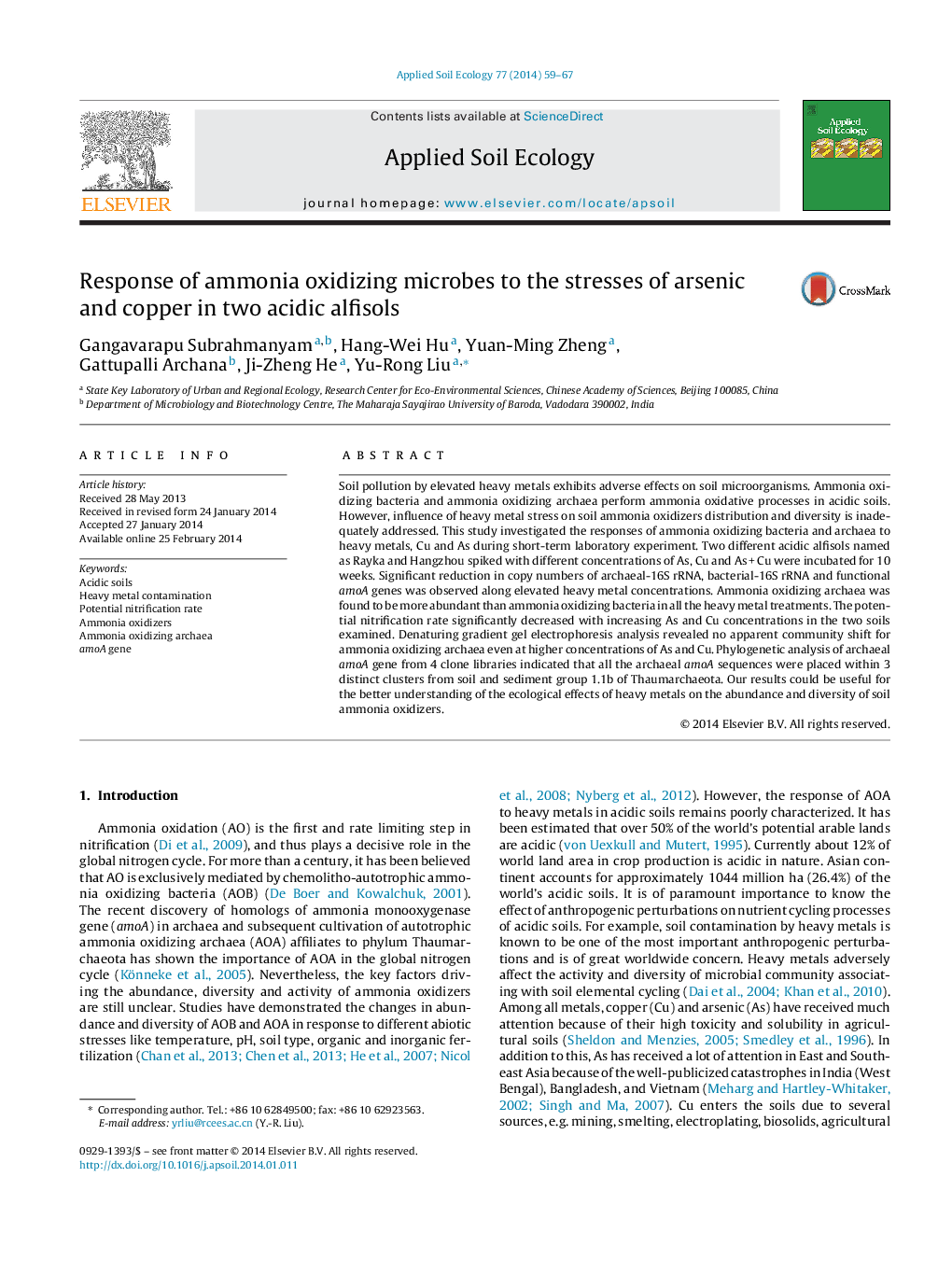| Article ID | Journal | Published Year | Pages | File Type |
|---|---|---|---|---|
| 4382307 | Applied Soil Ecology | 2014 | 9 Pages |
Soil pollution by elevated heavy metals exhibits adverse effects on soil microorganisms. Ammonia oxidizing bacteria and ammonia oxidizing archaea perform ammonia oxidative processes in acidic soils. However, influence of heavy metal stress on soil ammonia oxidizers distribution and diversity is inadequately addressed. This study investigated the responses of ammonia oxidizing bacteria and archaea to heavy metals, Cu and As during short-term laboratory experiment. Two different acidic alfisols named as Rayka and Hangzhou spiked with different concentrations of As, Cu and As + Cu were incubated for 10 weeks. Significant reduction in copy numbers of archaeal-16S rRNA, bacterial-16S rRNA and functional amoA genes was observed along elevated heavy metal concentrations. Ammonia oxidizing archaea was found to be more abundant than ammonia oxidizing bacteria in all the heavy metal treatments. The potential nitrification rate significantly decreased with increasing As and Cu concentrations in the two soils examined. Denaturing gradient gel electrophoresis analysis revealed no apparent community shift for ammonia oxidizing archaea even at higher concentrations of As and Cu. Phylogenetic analysis of archaeal amoA gene from 4 clone libraries indicated that all the archaeal amoA sequences were placed within 3 distinct clusters from soil and sediment group 1.1b of Thaumarchaeota. Our results could be useful for the better understanding of the ecological effects of heavy metals on the abundance and diversity of soil ammonia oxidizers.
